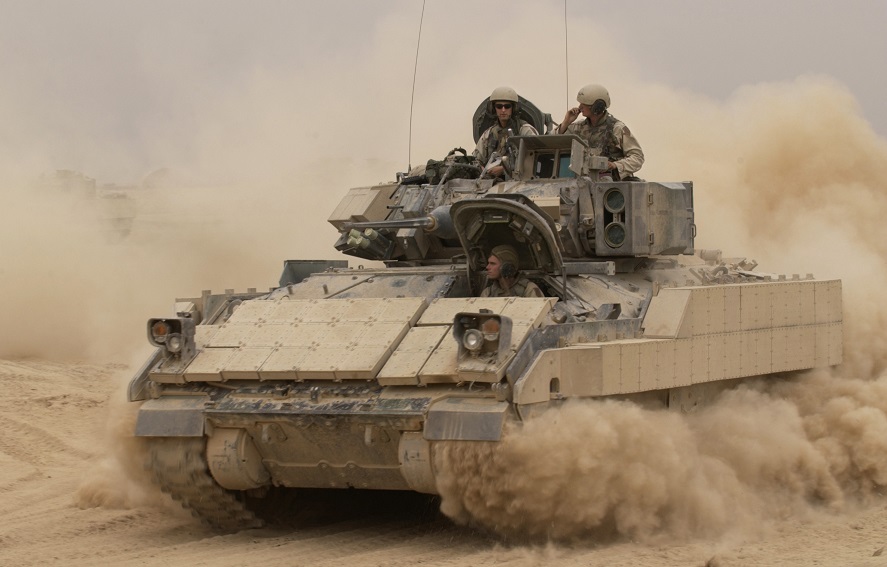This post is also available in:
 עברית (Hebrew)
עברית (Hebrew)
Solutions for effective “closed-hatch” operations are regularly sought by engineers. That is, driving an armored vehicle with the top hatches closed in order to provide better protection for the crew. In its current configuration, the Bradley can only be driven closed-hatch with the driver peering through mirrored sights with a limited field of view.
A new helmet-mounted stereo vision system for military heavy armored vehicle’s driver is under development. The U.S. Army Research, Development and Engineering Command’s center for ground vehicle systems, TARDEC, has been developing the technology with Honeywell Aerospace.
The system demonstrates a proof-of-concept for closed-hatch driving using high-resolution stereo vision combined with advanced head tracking technology integrated into a helmet mounted display.
TARDEC’s team includes engineers who install forward-leaning technologies like high-resolution 360 situational awareness sensors, cutting-edge communications, unmanned aerial vehicles and more onto modified vehicle platforms. The team then operates these demonstration platforms in a variety of conditions and simulated operations to gauge how well the technology enhances Soldier mission effectiveness, according to defence-blog.com.
The MET-D team pursued adding the Honeywell Aerospace technology, developed for the GXV-T program, to an existing suite of 360-degree situational awareness sensors to complete the driving experience. The system includes an array of forward-facing stereo camera pairs whose imagery is projected into the left and right eye of the user through a pair of holographic optical elements allowing them to perceive depth while showing a wide field of regard without causing nausea or eye strain.
Adding to the forward facing depth sensors are a combination of standard and fish-eye lens cameras to provide complementary views of the vehicle’s perimeter position and mid-range detection.


























